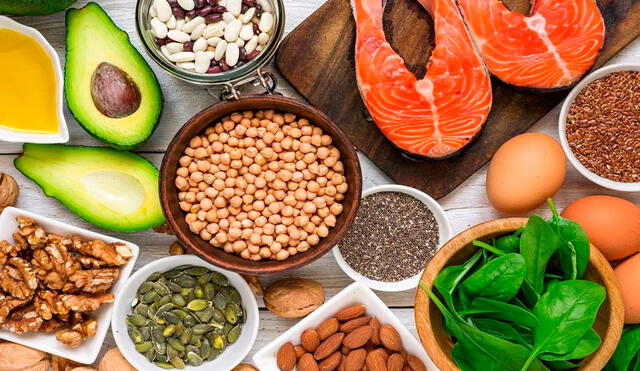5 alternatives to salmon that are just as rich in omega-3 fatty acids
These sources of Omega-3 are both delicious and nutritious, with high amounts of the nutrient.

Often known as omega-3 fatty acids, these essential oils constitute a necessary addition to our diet. Unlike other fats, our systems are unable to produce them in sufficient quantities on their own. In addition, omega-3s have anti-inflammatory properties, which help manage conditions like arthritis, asthma, and autoimmune diseases.
Omega-3s are important for brain development, improving memory, and protecting against cognitive decline. They are also known for their heart-protective effects, such as reducing triglycerides, lowering blood pressure, and preventing blood clots. Omega-3 fatty acids come in three main types:
- ALA (alpha-linolenic acid), found in plant-based sources.
- DHA (docosahexaenoic acid), primarily found in marine sources.
- EPA (eicosapentaenoic acid), primarily found in marine sources.

ALSO SEE: USDA grants conditional license for Zoetis' avian influenza vaccine amid ongoing H5N1 outbreak
Omega-3 sources that are not salmon
As much as salmon is tasty, it is also very expensive, depending on where you live. Luckily, there are other alternatives to consider. All nutrition data is from the USDA and FDA.
1. Walnuts
- 1 ounce = approximately 2,500 mg ALA omega-3s
Walnuts surpasses salmon in omega-3 content, although these tree nuts have ALA instead of DHA and EPA. They are a versatile option as the nutty taste is good for almost any dish. Walnuts are also high in fiber, Calcium and Potassium.
2. Chia seeds
- 1 ounce = approximately 5,000 mg ALA omega-3s
Chia seeds actually contain more omega-3s per serving than salmon, but the type of omega-3 differs. This plant-based source of omega-3 fatty acids, specifically ALA (alpha-linolenic acid), can be a great alternative to include in salads, smoothies, and even desserts.
3. Hemp hearts
- 3 tablespoons = approximately 2,000 mg ALA omega-3
Hemp hearts provide a balance of omega-3 and omega-6 fatty acids in an ideal ratio, unlike salmon. Besides the omega-3's, they are packed with protein. Other nutrients like magnesium, zinc, and iron make hemp hearts a tasty option for vegans and vegetarians alike.
4. Herring
- 3.5 ounces = approximately 2,300 mg DHA and EPA omega-3
Herring is particularly high in EPA and DHA. Although it may not be as well-known as salmon, herring can be eaten fresh or pickled. Herring contains vitamin D and Selenium, as well as antioxidants like vitamin E, which boost immunity and shield cells from oxidative harm.
5. Mackerel
- 3.5 ounces = approximately 5,000 mg DHA and EPA omega-3 fatty acids
Mackerel is an impressive source of omega-3, surpassing salmon. This fish is one of the highest natural sources of these fatty acids. Despite being super nutritious, it is often overlooked. It can be enjoyed grilled or baked, the flavor profile is slightly sweet and salty.
Why is Omega-3 so essential to our health?
Apart from previously described benefits, omega-3 oils are linked to improved mental health, potentially reducing the risk of depression, anxiety, and other mood disorders. These fatty acids not only have scientifically proven advantages to our health, but they also contribute to the overall body maintenance, as they keep a healthy hair, skin, and nails.
The American Heart Association (AHA) recommends 500 mg of EPA and DHA omega-3s daily for general health, achievable through two servings of fatty fish per week. For heart disease, this intake increases to 1,000 mg daily. Pregnant and breastfeeding women are advised to get 300 mg of DHA daily.











